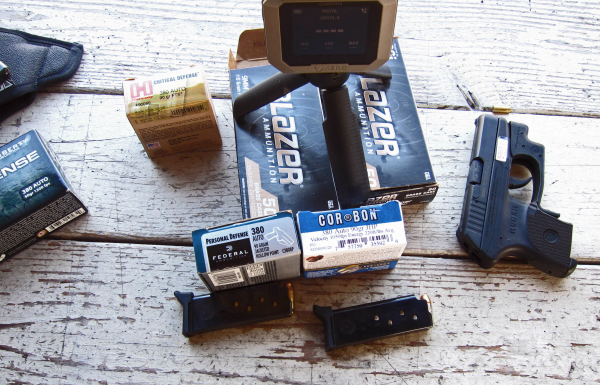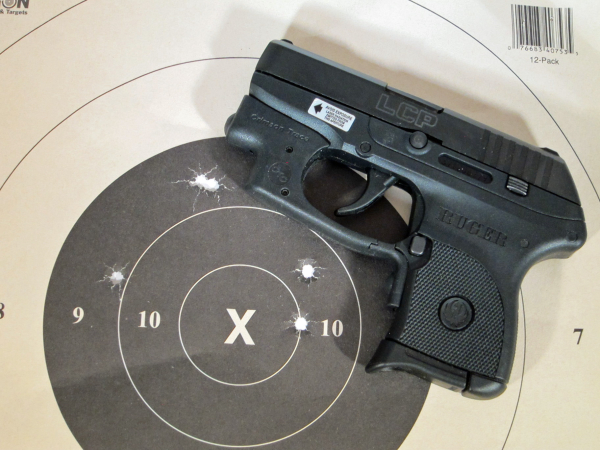In terms of assessing ammunition, I’ve likely repeated this until the readers are drowsy, but I’m seeking (1) ignition reliability, (2) functional reliability, and (3) to determine point of aim/point of impact disparity.
The handgun hollow point bullet has an inverse relationship between two variables, in terms of effects on target. Assuming you can hit what you need to hit when you need to hit it, penetration has a negative covariance to expansion.
In short, “you don’t get something for nothing.” To get reliable, extreme expansion without fragmentation, you will necessarily limit penetration. That, in fact, is the idea: you don’t want to be indiscriminately drilling through everything and everyone, putting others at risk. In the old days, the informal anecdotal information indicated that there was a 50/50 chance of perforation with 230 grain ball (presumably, but not necessarily from a 5” barrel).
Doing the deep dive on getting just the right penetration included a bullet that would increase its profile through expansion, decelerating the round to limit penetration.
Then Miami happened – and the cry went out for increased penetration.
With tiny guns, deceleration in media isn’t the issue; it’s having the projectile with properties that will allow the magic-FBI-mandated depth of penetration with the velocity available from a “subcaliber” gun.
See why I don’t examine that issue? To get a decent data set requires a lot of setup time, stuff, expense and it doesn’t answer the primary objective standards: ignition reliability, functional reliability and hits to the sights.
I leave it to others to play with “jello.”

On this occasion, still having the Garmin Xero C1 for a limited time, I elected to see how the smallest commonly/easily available US defense round for an auto pistol would work out. I grabbed four different brands and types of 380 ACP ammo to fire from the Ruger LCP (not the LCPII).
A small gun, likely all the ammo would have similar ballistics – except one, the Liberty Civil Defense. With a projectile weight forty grains less than the near-standard 90 grain JHP designs, I expected it to go faster.
What wasn’t tested?
Due to extreme time constraints and having to get the sample Xero C1 returned to Garmin, I was unable to do a target set up and check group sizes and point of impact relative to the sights. I even ran short on time to run the loads through a spare 380, the GLOCK 42.
As to my bias against the “FBI magic bullet concept,” I do believe the ammo companies should continue down this path; thus far, it’s produced some of the finest factory ammo ever. That said, we’re still talking about handguns and they simply poke holes in the target media – even operationally.
Before going on, the 380 loads – even the outlier earlier production CorBon and the Liberty Civil Defense – were functionally reliable in the elder Ruger LCP. That means they met the second standard. I didn’t have enough to test ignition reliability
The CorBon load was noticeably hot. I’m not sure I’d select it over the Hornady or Federal loads. The Liberty was fast, that emphasis added because the velocity was emphatic. My concerns would be point of aim/point of impact and whether the bullet would hold together in other-than-paper media.
I recently saw a social media video of a 9mm Liberty Civil Defense load and the base of the bullet indeed went deeply into the gel after passing through the “four layers of denim.” I have no reason to doubt that result. If you rely on foot-pounds energy as a standard, Liberty was just under 229 fpe; Cor-Bon came in second, at around 192 fpe.
Of the four loads tested, the Liberty had the highest extreme spread of velocities as well as the highest velocity average (1,436 fps) than the others, followed by the 90 grain powerpack from CorBon (979 fps). Liberty had pronounced blast but less apparent recoil than the CorBon. CorBon had the least extreme spread of velocities.

Federal Personal Defense was slowest and “felt” the most like the Hornady Critical Defense offering.
The LCP, this one from the second generation, with a partly cocked DA trigger, is very small, giving the shooter little to hang onto. Of the loads tried, my objective would be to find the one that hits to point of aim at 30 feet with the little LCP and use it. As reported, all the loads fed, fired, extracted and ejected from the little blaster.
People might say this isn’t much of a gun, but it’s far better than no gun at all. They’re now available at special prices or you could opt for the LCPII or LCP-MAX. Whichever, get a pair of them – one for practice and one for carry.
As for the Xero C1 Chrono from Garmin, it’s a champ. I did another test shortly after this one on the opposite ends of the handgun power spectrum. Stay tuned.
Data:
CorBon 90gr JHP Ruger LCP
Vel. Avg FPE Avg.
979.1 | 191.64
SD 19
Spread 51.6 fps
Federal Personal Defense, Ruger LCP
895 | 160.14
SD 18.5
Spread 54.5 fps
Hornady Critical Defense, Ruger LCP
917.3 | 168.18
SD 19.6
Spread 56.5 fps
Liberty Civil Defense, Ruger LCP
1435.6 | 228.82
SD 19.9
Spread 60.7 fps
— Rich Grassi